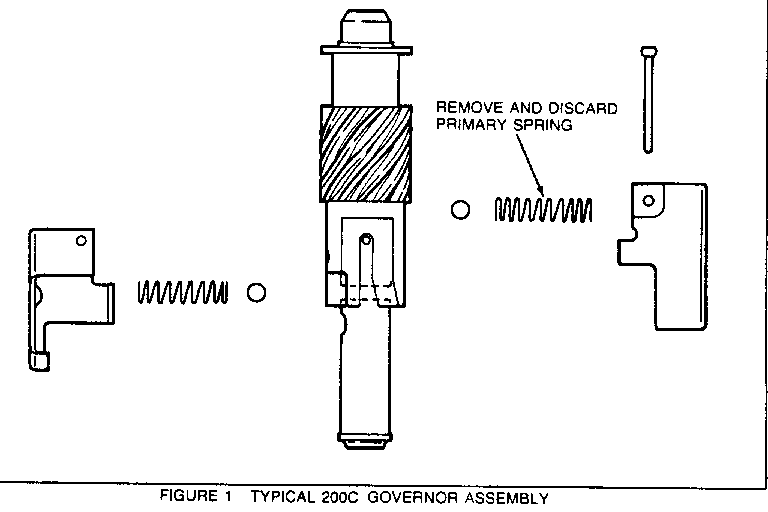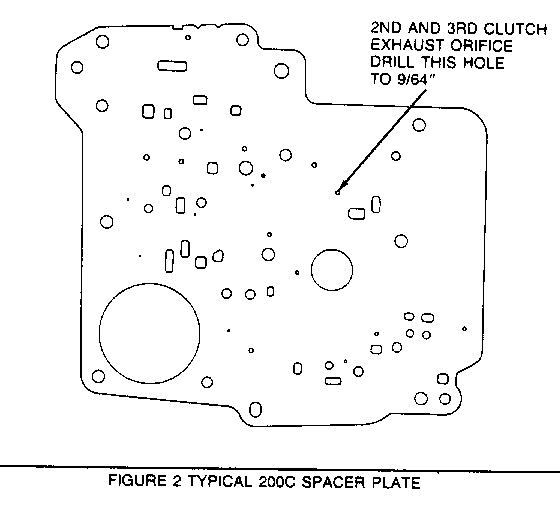2-1 COAST DOWN CLUNK GEAR/OUTPUT SHAFT INFORMATION

Model and Year ALL 1984 THRU SOME EARLY 1985 THM 200C TRANSMISSION
Some 1984 through some early 1985 model THM 200C transmissions may experience a 2-1 coastdown clunk condition. This condition occurs as the transmission shifts to first gear just before the car stops.
The condition can be repaired as follows:
1. Check engine idle speed and set to specifications.
2. Check the vehicles rear differential back lash and correct if necessary.
3. On the 1984 "BH and the 1985 "BH" model transmissions only, remove the primary spring from the governor assembly (Figure 1).
4. On any 1984 and early 1985 THM 200C built prior to Julian Date 268, remove the valve body spacer plate. Drill the 2nd and 3rd clutch exhaust orifice out to 3.57mm (9/64") (Figure 2). Using a 6.3mm drill bit, hand chamfer both sides of the hole, slightly, to remove burrs and rough edges.
In some cases the above "on car" procedure may not repair this condition; it will then be necessary to perform the following procedure.
1. Replace the rear internal gear and output shaft with P/N 8633910. This service package will have the rear internal gear pressed onto the output shaft.
NOTICE: The OI, OR, and OU THM 200C models already have the press fit rear internal gear and output shaft and does not require replacement.
2. Upon reassembly of the transmission reduce the transmission Output Shaft rear end play to .10mm - .38mm (.004 - .015 inches) by using a thicker selective washer, if required.
NOTICE: DO NOT LET REAR END PLAY GET LOWER THAN .004 INCHES. TRANSMISSION DAMAGE MAY RESULT.
Refer to the appropriate service manual for proper procedures not stated above.


General Motors bulletins are intended for use by professional technicians, not a "do-it-yourselfer". They are written to inform those technicians of conditions that may occur on some vehicles, or to provide information that could assist in the proper service of a vehicle. Properly trained technicians have the equipment, tools, safety instructions and know-how to do a job properly and safely. If a condition is described, do not assume that the bulletin applies to your vehicle, or that your vehicle will have that condition. See a General Motors dealer servicing your brand of General Motors vehicle for information on whether your vehicle may benefit from the information.
